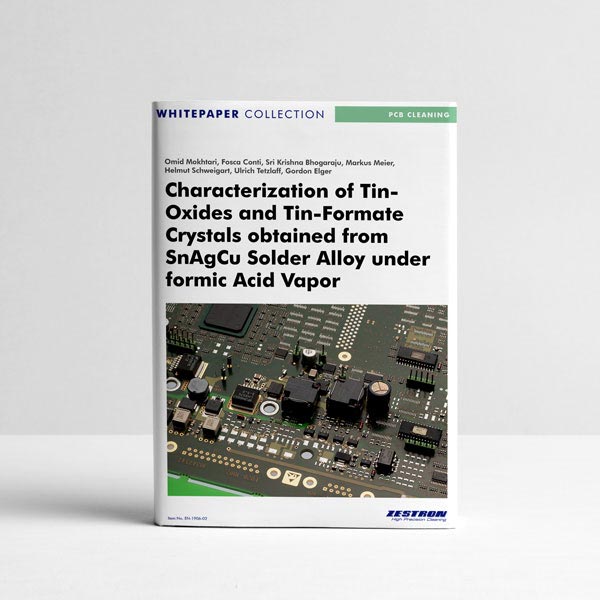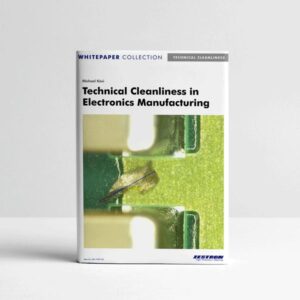Description
[06/2019]
To solder metal parts efficiently, layers of oxides on the surfaces need to be removed. The use of formic acid vapour as a reducing agent is a valid alternative to liquid fluxes, i.e. organic or inorganic based. Fluxless soldering is growing in its applicability, especially in microelectronics packaging. Nevertheless, some residues are produced. This study focuses on the characterization of these residues, which are obtained by flowing nitrogen gas enriched with formic acid at 2008C on Sn3Ag0.5Cu (SAC305) metal alloy, a widely used soldering material. The formation of microcrystals is observed and attributed to heat and mass transfer processes of the formic acid vapor. While there is a wealth of reported studies on soldering results under a formic acid atmosphere, there is a lack of information with regards to a specific understanding of the chemical compositions of these undesired residues. The second purpose of this study was to confirm the recently introduced method of producing Sn-based crystals under a formic acid atmosphere. X-ray diffraction (XRD), energy-dispersive X-ray (EDX) and infrared spectroscopy (IR spectroscopy) investigations allow us to assign the composition of the microstructures. Crystals of Sn formate, Sn oxide, and bimetallic Cu6Sn5 were detected and a mechanism of formation of these crystals was suggested.


 Dr. Helmut Schweigart
Head of Reliability & Surfaces, ZESTRON EUROPE
Dr. Helmut Schweigart obtained his doctorate for research into the reliability of electronic sub-assemblies, and he has been employed at ZESTRON Europe since the early days of the company. He is now Head of Reliability & Surfaces Team. He is also a member of the Board of Management at GfKORR (Gesellschaft für Korrosionsschutz - a company specialising in corrosion inhibitors) as well as an active member of GUS (Gesellschaft für Umweltsimulation - an environmental simulation company) and of the IPC. He has already published numerous technical articles.
Dr. Helmut Schweigart
Head of Reliability & Surfaces, ZESTRON EUROPE
Dr. Helmut Schweigart obtained his doctorate for research into the reliability of electronic sub-assemblies, and he has been employed at ZESTRON Europe since the early days of the company. He is now Head of Reliability & Surfaces Team. He is also a member of the Board of Management at GfKORR (Gesellschaft für Korrosionsschutz - a company specialising in corrosion inhibitors) as well as an active member of GUS (Gesellschaft für Umweltsimulation - an environmental simulation company) and of the IPC. He has already published numerous technical articles.
 Dr. Markus Meier
Senior Technology Analyst, ZESTRON EUROPE
After his study of chemistry at the Technical University Munich, Markus Meier worked among others on the ageing of cement and earned a PhD on the topic crystallization of cement-hydrate-phases under microgravity conditions. He is experienced in the areas interfacial chemistry and surface analytics. He is part of the Reliability & Surfaces Team in which he is responsible for the coordination of research projects as well as the organization of technology coachings. He has already published numerous technical articles.
Dr. Markus Meier
Senior Technology Analyst, ZESTRON EUROPE
After his study of chemistry at the Technical University Munich, Markus Meier worked among others on the ageing of cement and earned a PhD on the topic crystallization of cement-hydrate-phases under microgravity conditions. He is experienced in the areas interfacial chemistry and surface analytics. He is part of the Reliability & Surfaces Team in which he is responsible for the coordination of research projects as well as the organization of technology coachings. He has already published numerous technical articles.


